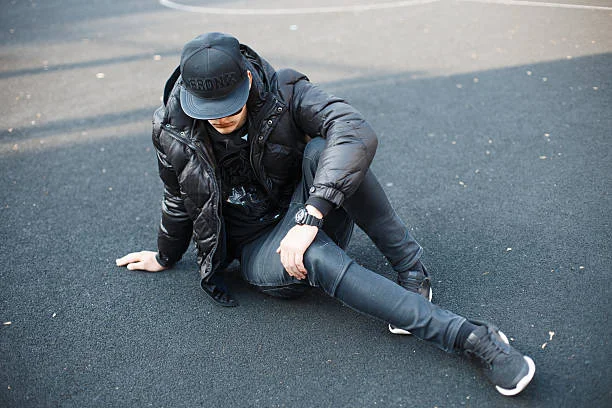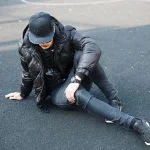Slip-and-fall accidents happen suddenly, but their impact can last for months, years, or even a lifetime. In crowded urban environments like the Bronx — where apartment buildings, grocery stores, subway platforms, and sidewalk entrances all carry their own hazards — these accidents are far more common than most people realize Bronx slip-and-fall. A single wet floor, broken step, or icy patch can change a person’s life in an instant.
Victims struggling with medical bills, missed work, and long-term pain often wonder what it actually takes to hold a negligent property owner responsible. That is where understanding the legal framework becomes essential. Many people turn to a slip and fall injury lawyer to help them navigate the four elements of premises liability — the fundamental building blocks required to prove a case in New York.
Understanding Premises Liability: The Foundation of Your Case
Premises liability is a legal concept that holds property owners responsible for maintaining a reasonably safe environment. This applies to landlords, businesses, government agencies, homeowners, and anyone who controls a property. But not all accidents automatically qualify for compensation. The law requires victims to prove four specific elements — each of which builds upon the last.
Failing to establish even one element can weaken or even eliminate a claim. That’s why understanding each component is crucial for anyone injured in a slip-and-fall accident in the Bronx.
A related post awaits—click to uncover extra value for your journey.
Element One: The Property Owner Owed You a Duty of Care
Every premises liability case begins with duty of care — the legal obligation a property owner has toward people who enter their property. In most Bronx slip-and-fall cases, victims fall under one of two categories:
- Invitees: Shoppers, customers, or individuals on business premises.
- Licensees: Social guests or visitors with permission to be on the property.
Both groups are owed a duty of care, meaning property owners must take reasonable steps to keep the premises safe. This includes inspecting the property regularly, repairing hazards, and providing warnings when dangers cannot be fixed immediately.
Even tenants in apartment buildings are owed this duty. Landlords must maintain hallways, stairwells, lobbies, and common areas; failure to do so can create a strong basis for liability.
Element Two: The Property Owner Breached That Duty
Once duty is established, the next step is proving that the property owner breached that duty. A breach occurs when the owner fails to act as a reasonably cautious person would under similar circumstances. Examples include:
- Ignoring wet floors or spills
- Failing to shovel snow or remove ice
- Neglecting to repair broken steps or handrails
- Allowing clutter or debris to accumulate
- Leaving dimly lit stairwells or walkways unchanged
- Failing to respond to tenant complaints
- Not posting warning signs for known hazards
In many Bronx buildings — especially older ones — deferred maintenance is a major issue. Worn-out flooring, cracked tiles, loose carpeting, and uneven sidewalks are all common hazards that indicate a clear breach of duty.
Element Three: The Hazard Directly Caused Your Accident
Causation is one of the most contested parts of a slip-and-fall claim. Property owners often argue that the victim was distracted, careless, or wearing improper footwear — anything to shift blame. To meet this element, victims must show that the hazard directly caused the fall.
Strong evidence can help establish causation, such as:
- Photos of the dangerous condition
- Videos from security cameras
- Witness statements
- Incident reports
- Medical documentation linking injuries to the fall
- Evidence of prior complaints about the same hazard
Causation doesn’t require the victim to prove the hazard was the only cause — just that it was a significant contributing factor. When a property owner’s negligence creates or ignores a danger, they may still be liable even if other factors played a minor role.
Element Four: You Suffered Actual Damages
The final element is proving that the fall caused real, measurable harm. Damages can include:
- Emergency room costs
- Doctor visits, MRIs, and X-rays
- Physical therapy and rehabilitation
- Prescription medications
- Lost wages
- Reduced earning capacity
- Pain and suffering
- Emotional distress
- Long-term disability
In a Bronx slip-and-fall accident, serious injuries like broken bones, concussions, spinal injuries, or torn ligaments can require months of treatment. Without demonstrating these losses — through medical records, bills, and documentation — a claim cannot be successful.
Why Evidence Is So Critical in Bronx Slip-and-Fall Cases
Premises liability cases often rise or fall based on the strength of the evidence collected. The Bronx has countless older buildings with longstanding maintenance issues, but landlords and businesses frequently deny wrongdoing. That makes immediate documentation essential.
Key forms of evidence include:
- Clear photos of the hazard
- Videos showing lighting conditions or walking surfaces
- A record of previous tenant complaints
- Repair logs or maintenance histories
- Weather reports for outdoor slip hazards
- Expert analysis of code violations
Evidence helps overcome common defenses used by property owners, including claims that the tenant caused the fall or that the hazard appeared too recently to be discovered.
Common Defenses Property Owners Use — and How to Counter Them
Property owners rarely admit fault. Instead, they often rely on strategies such as:
- “We didn’t know about the hazard.”
But liability can still apply if they should have known through reasonable inspections. - “The victim wasn’t paying attention.”
New York’s comparative negligence rule still allows victims to recover compensation even if they share partial responsibility. - “The area was open and obvious.”
Even visible hazards can still be dangerous — and still require repair. - “We fixed the hazard right after.”
Quick repairs often signal the owner knew the condition was unsafe.
Knowing these defenses ahead of time helps victims prepare stronger claims.
Holding Negligent Property Owners Accountable
Slip-and-fall accidents are preventable. The four elements of premises liability — duty, breach, causation, and damages — provide a clear path for holding negligent property owners accountable when they fail to maintain safe conditions. From dim stairwells to icy sidewalks to broken flooring, hazards ignored today can lead to life-changing injuries tomorrow.
Understanding these elements empowers victims to take action, protect their rights, and pursue fair compensation. When property owners neglect their legal responsibilities, the law provides a way forward — and justice often begins with knowing exactly what must be proven.
Ready for more? Explore more posts that broaden your knowledge fast at 2A Magazine.







